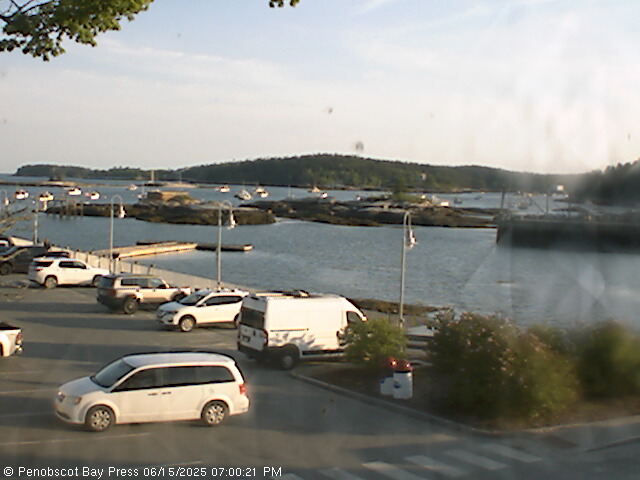Stonington, Maine Weather Cams
View of Stonington Harbor Cam

Stonington, Maine: A Legacy of Maritime Industry, Granite Quarries, and Coastal Resilience
Stonington, Maine Weather Cams. Located on the southern tip of Deer Isle, Stonington, Maine, is a town steeped in history, shaped by its maritime traditions, granite quarrying, and the enduring spirit of its coastal community. From its early Indigenous inhabitants to its rise as a fishing and quarrying hub, Stonington has played a vital role in Maine’s economic and cultural landscape.
Indigenous Presence and Early European Exploration
The first known inhabitants of Deer Isle, including Stonington, were the Abenaki people, who lived in the region as far back as 6,100 years ago. The Abenaki relied on the rich marine resources of Penobscot Bay, fishing, hunting, and trading with neighboring tribes.
European exploration of the area began in the early 16th century. Estevan Gomez, a Portuguese explorer sailing for the Spanish Crown, navigated the waters of Eggemoggin Reach, searching for gold and a passage to Asia. However, it was the French who established a stronger presence in the region, intermarrying with the Abenaki and leaving behind remnants of their settlements.
Colonial Settlement and Early Industry
The first European settler of Deer Isle was William Eaton, who arrived in 1762. By 1765, migration to the island increased, with settlers petitioning the Massachusetts government for legal land titles. Many of these early settlers came from Newburyport, Massachusetts, bringing with them a strong maritime tradition.
By the early 19th century, settlers established Green’s Landing, the precursor to modern-day Stonington. Fishing and small-scale trade dominated the local economy, but the town’s true industrial boom came with the rise of granite quarrying.
The Granite Quarrying Boom
Stonington’s granite industry flourished in the late 19th century, attracting workers from across New England. The town’s quarries produced high-quality granite used in major construction projects, including New York’s Brooklyn Bridge and Boston’s Custom House Tower. The industry brought prosperity, with Stonington becoming a bustling center of commerce.
In 1897, Stonington officially incorporated as a town, marking its transition from a small fishing village to an industrial hub. At its peak, the town’s population reached 5,000 residents, with neighborhoods like Sunshine, Sunset, Oceanville, and the Reach functioning as self-contained communities, each with its own school and post office.
Fishing Industry and Maritime Heritage
While granite quarrying was a dominant industry, Stonington’s fishing heritage remained strong. In the 19th century, cod and mackerel fisheries thrived, supplying markets across the East Coast. However, by the 20th century, lobster fishing became the town’s primary maritime industry.
Today, Stonington is Maine’s largest lobster port, consistently ranking among the top lobster-producing towns in the country. In 2011, Stonington fishermen landed 14.8 million pounds of lobster, valued at $46.3 million. The town’s working waterfront remains a vital part of its identity, supporting generations of fishing families.
Cultural and Economic Shifts
Over the decades, Stonington has evolved, balancing its industrial past with a growing creative economy. The town is home to institutions like the Stonington Opera House and the Haystack Mountain School of Crafts, which attract artists and visitors from around the world. Local businesses, including restaurants and artisan shops, showcase the town’s rich cultural heritage.
Despite economic shifts, Stonington has maintained its resilience. While the year-round population has declined to around 1,000 residents, seasonal visitors and artists contribute to the town’s vibrancy.
Modern-Day Stonington
Today, Stonington is a picturesque coastal town that honors its past while embracing the future. Its historic waterfront, granite quarries, and lobster industry continue to define its identity. Whether through its maritime traditions, artistic community, or enduring spirit, Stonington remains a vital part of Maine’s coastal heritage.
For more information, visit the Stonington, Maine official website.
